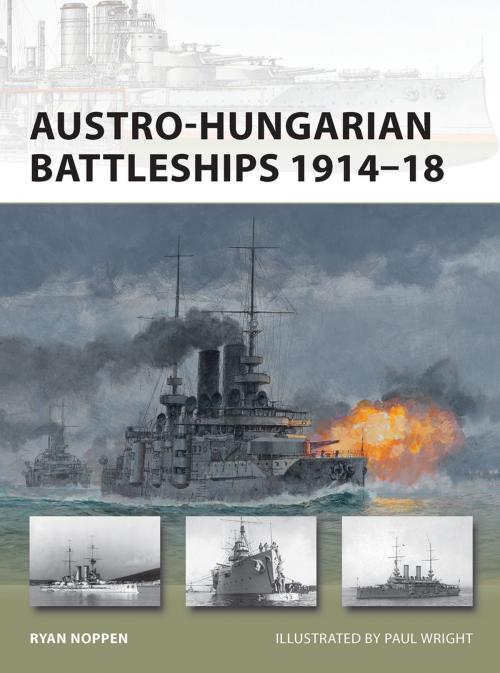Austro-Hungarian Battleships 1914–18
Nonfiction, History, Austria & Hungary, Military, Naval, World War I| Author: | Ryan K. Noppen | ISBN: | 9781780968971 |
| Publisher: | Bloomsbury Publishing | Publication: | September 20, 2012 |
| Imprint: | Osprey Publishing | Language: | English |
| Author: | Ryan K. Noppen |
| ISBN: | 9781780968971 |
| Publisher: | Bloomsbury Publishing |
| Publication: | September 20, 2012 |
| Imprint: | Osprey Publishing |
| Language: | English |
Austria-Hungary did not have an overseas empire; its empire lay within its own boundaries and the primary purpose of its navy until the beginning of the twentieth century was the defense of its coastline. As its merchant marine dramatically grew, admirals believed that the navy should take a more proactive policy of defense. The 1890s saw the beginning of a series of naval building programs that would create a well-balanced modern fleet. Cruisers were constructed for the protection of overseas trade and for "showing the flag†? but the decisive projection of Austria-Hungary's commitment to control the Adriatic was the construction of a force of modern battleships. Despite the naval arms race throughout Europe at the time, the navy had difficulty obtaining funds for new ships. The difficulties experienced in battleship funding and construction mirrored the political difficulties and ethnic rivalries within the empire. Nevertheless by August of 1914, the Austro-Hungarian had a fleet of battleships. This book details the five classes of Austro-Hungarian battleships in service during World War I.
Austria-Hungary did not have an overseas empire; its empire lay within its own boundaries and the primary purpose of its navy until the beginning of the twentieth century was the defense of its coastline. As its merchant marine dramatically grew, admirals believed that the navy should take a more proactive policy of defense. The 1890s saw the beginning of a series of naval building programs that would create a well-balanced modern fleet. Cruisers were constructed for the protection of overseas trade and for "showing the flag†? but the decisive projection of Austria-Hungary's commitment to control the Adriatic was the construction of a force of modern battleships. Despite the naval arms race throughout Europe at the time, the navy had difficulty obtaining funds for new ships. The difficulties experienced in battleship funding and construction mirrored the political difficulties and ethnic rivalries within the empire. Nevertheless by August of 1914, the Austro-Hungarian had a fleet of battleships. This book details the five classes of Austro-Hungarian battleships in service during World War I.















